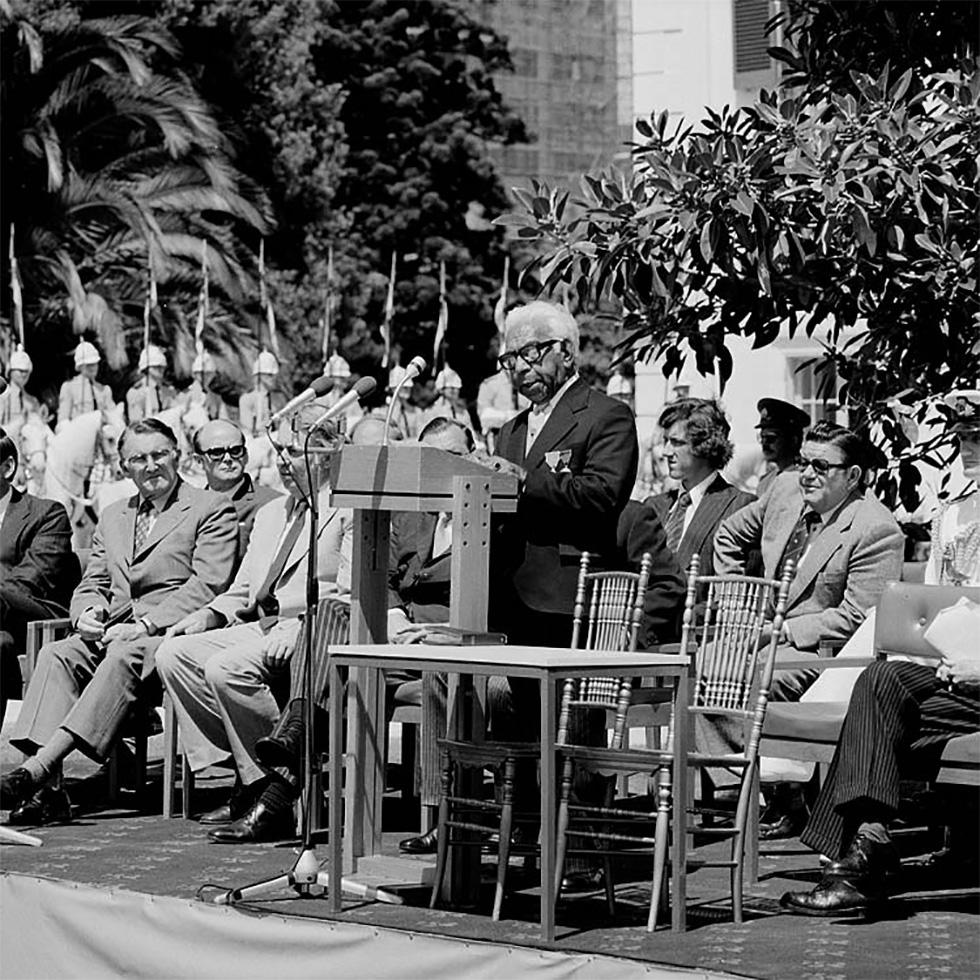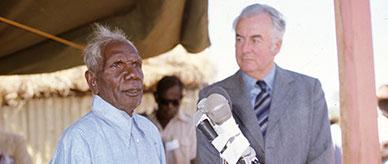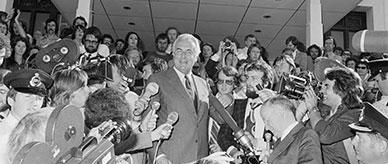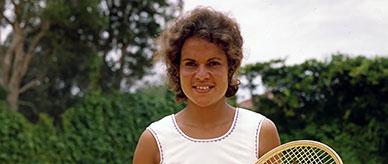


About this record
This black-and-white photograph shows the Indigenous leader Sir Douglas Nicholls giving a speech on the lawns of Government House in North Terrace, Adelaide, after being sworn in as Governor of South Australia on 1 December 1976. Nicholls is standing at a lectern in front of seated dignitaries, including Prime Minister Malcolm Fraser. In the background stands a row of helmeted military personnel bearing flags.
Educational value
- Sir Douglas Nicholls (1906–88) became Australia's first Indigenous governor at the ceremony shown in this photograph. Nicholls had fought for Indigenous rights and worked for Indigenous welfare since the 1930s, was a pastor in the Church of Christ, a prominent VFL (now known as AFL) footballer and the first Indigenous Australian to be awarded a knighthood. Recommended for appointment by premier Don Dunstan (1926-99), he was addressing a crowd of about 1500 people.
- Nicholls, a Yorta Yorta man born at the Cumeroogunga mission on the New South Wales–Victoria border, played an important role in the Indigenous civil rights movement. A speaker at the Day of Mourning held in Sydney in 1938, he worked for the Victorian Aboriginal Advancement League and was the Victorian Secretary of the Federal Council for the Advancement of Aborigines and Torres Strait Islanders and one of the leaders of the campaign for the referendum of 1967.
- Nicholls' work for his people was recognised in a series of awards. He was made a Member of the British Empire (MBE) in 1957, and was the first Indigenous Australian to be awarded an Order of the British Empire (OBE) in 1968. As a result of his work with young people and his community, he was named Victoria's Father of the Year in 1962. In 1972 he became the first Indigenous Australian to receive a knighthood for his work for the welfare of Indigenous people.
- An outstanding sportsman, Nicholls played Australian Rules football for Fitzroy and was the first Indigenous member of the Victorian Interstate Team in 1935. In the same year, he became a lay preacher at Fitzroy's Gore Street Mission Centre. Nicholls enlisted during World War II, but in response to a request from Fitzroy police was discharged so that he could continue welfare work with the local Indigenous community. The first Aboriginal Church of Christ in Australia was formed with Nicholls as its pastor.
Acknowledgments
Learning resource text © Education Services Australia Limited and the National Archives of Australia 2010.
Related themes
Need help with your research?
Learn how to interpret primary sources, use our collection and more.



